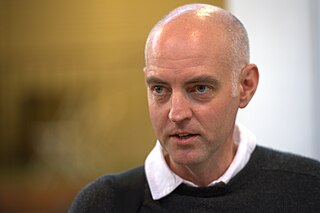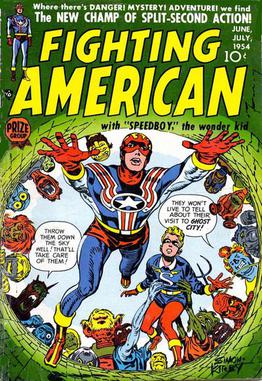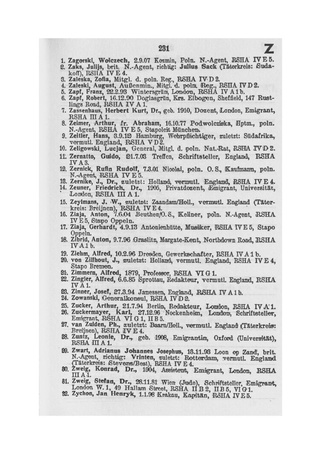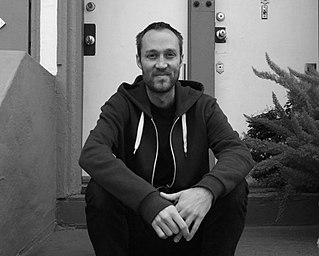
John Heartfield was a 20th-century German visual artist who pioneered the use of art as a political weapon. Some of his most famous photomontages were anti-Nazi and anti-fascist statements. Heartfield also created book jackets for book authors, such as Upton Sinclair, as well as stage sets for contemporary playwrights, such as Bertolt Brecht and Erwin Piscator.

The Reichstag fire was an arson attack on the Reichstag building, home of the German parliament in Berlin, on Monday 27 February 1933, precisely four weeks after Nazi leader Adolf Hitler was sworn in as Chancellor of Germany. Marinus van der Lubbe, a Dutch "council communist", was the apparent culprit; however, Hitler attributed the fire to Communist agitators. He used it as a pretext to claim that Communists were plotting against the German government, and induced President Paul von Hindenburg to issue the Reichstag Fire Decree suspending civil liberties, and pursue a "ruthless confrontation" with the Communists. This made the fire pivotal in the establishment of Nazi Germany.

Daniel Gillespie Clowes is an American cartoonist, graphic novelist, illustrator, and screenwriter. Most of Clowes's work first appeared in Eightball, a solo anthology comic book series. An Eightball issue typically contained several short pieces and a chapter of a longer narrative that was later collected and published as a graphic novel, such as Like a Velvet Glove Cast in Iron (1993), Ghost World (1997), David Boring (2000) and Patience (2016). Clowes's illustrations have appeared in The New Yorker, Newsweek, Vogue, The Village Voice, and elsewhere. With filmmaker Terry Zwigoff, Clowes adapted Ghost World into a 2001 film and another Eightball story into the 2006 film, Art School Confidential. Clowes's comics, graphic novels, and films have received numerous awards, including a Pen Award for Outstanding Work in Graphic Literature, over a dozen Harvey and Eisner Awards, and an Academy Award nomination.
The early timeline of Nazism begins with its origins and continues until Hitler's rise to power.
The Ignatz Awards recognize outstanding achievements in comics and cartooning by small press creators or creator-owned projects published by larger publishers. They have been awarded each year at the Small Press Expo since 1997, only skipping a year in 2001 due to the show's cancellation after the September 11 attacks. As of 2014 SPX has been held in either Bethesda, North Bethesda, or Silver Spring, Maryland.
Joe Matt is an American cartoonist, best known for his autobiographical work, Peepshow.

It's a Good Life, If You Don't Weaken is a graphic novel by Canadian cartoonist Seth. It appeared in a collected volume in 1996 after serialization from 1993 to 1996 in issues #4–9 of Seth's comic book series Palookaville. The mock-autobiographical story tells of its author's obsessive search for the work of a fictional forgotten cartoonist.

Fighting American is a superhero created in 1954 by the writer-artist team of Joe Simon and Jack Kirby. Published by the Crestwood Publications imprint Prize Comics, it was, contrary to standard industry practices of the time, creator-owned. Harvey Comics published one additional issue in 1966. One final inventoried tale was published in 1989, in a Marvel Comics hardcover collection of all the Fighting American stories.
Young Allies is the name of three fictional superhero teams appearing in American comic books published by Marvel Comics.

The Sonderfahndungsliste G.B. was a secret list of prominent British residents to be arrested, produced in 1940 by the SS as part of the preparation for the proposed invasion of Britain. After the war, the list became known as The Black Book.

Adolf Hitler's rise to power began in the newly established Weimar Republic in September 1919 when Hitler joined the Deutsche Arbeiterpartei. He rose to a place of prominence in the early years of the party. Being one of its best speakers, he was made the party leader after he threatened to otherwise leave.

Superman's Metropolis is a DC Comics comic book and a Superman Elseworlds publication. It is the first part of a trilogy based on German Expressionist cinema, succeeded by Batman: Nosferatu and Wonder Woman: The Blue Amazon. It was written by Jean-Marc Lofficier, Randy Lofficier and Roy Thomas and illustrated by Ted McKeever.
Jason Lutes is an American comics creator. His work is mainly historical fiction, but he also works in traditional fiction. He is best-known for his Berlin series, which he wrote and drew over 22 years. He has also written a handful of other graphic novels, as well as many short pieces for anthologies and compilations. He now teaches comics at the Center for Cartoon Studies.

Anders Nilsen is an American cartoonist who lives in Los Angeles, California.

Black Eye Books is a small but influential Canadian comic book publishing company founded by Michel Vrana. Under the auspices of Vrana, Black Eye was known as a publisher of artfully designed alternative comics and graphic novels, most of whose cartoonists have gone on to successful careers with fellow Canadian publisher Drawn & Quarterly. For several years, Vrana acted as Drawn & Quarterly's exclusive outside design consultant. In 2019 the company was relaunched as a micro-press with a focus on using crowdfunding to bring projects to fruition.
Beefsteak Nazi or "Roast-beef Nazi" was a term used in Nazi Germany to describe communists and socialists who joined the Nazi Party. Munich-born American historian Konrad Heiden was one of the first to document this phenomenon in his 1936 book Hitler: A Biography, remarking that in the Sturmabteilung ranks there were "large numbers of Communists and Social Democrats" and that "many of the storm troops were called 'beefsteaks' – brown outside and red within". The switching of political parties was at times so common that SA men would jest that "[i]n our storm troop there are three Nazis, but we shall soon have spewed them out".
Vulcan the Volcanic Man is a fictional superhero from the Golden Age of Comic Books. He first appeared in Super-Mystery Comics #1, published by Ace Comics in July 1940. His creator is unknown, but some of his stories were written by Otto Binder, with Maurice Gutwirth and Jack Alderman illustrating.

Michael DeForge is a Canadian comics artist and illustrator.
Silvia Rodgers, Baroness Rodgers,, née Silvia Szulman, was a German-Jewish-British writer and political activist. She was married to Bill Rodgers, Baron Rodgers of Quarry Bank.












